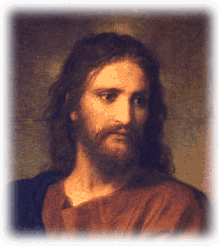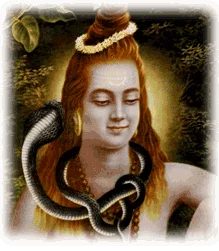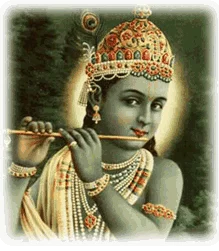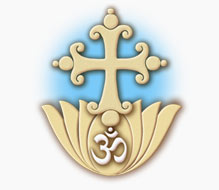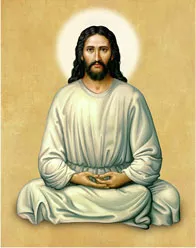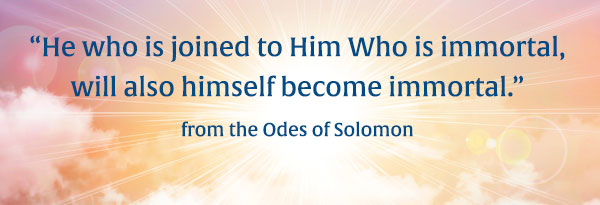
This is a continuation of our series of postings on the early Christian writings, the mystical Odes of Solomon, written in Apostolic times.
As many of you as have been baptized into Christ have put on Christ (Galatians 3:27).
I am putting on the love of the Lord.
And his members are with him, and I am dependent on them and he loves me.
For I should not have known how to love the Lord, if he had not loved me.
For who is able to distinguish love, except the one that is loved?
I love the Beloved and my soul loves him, and where his rest is there also am I.
And I shall be no stranger, for with the Lord Most High and Merciful there is no grudging.
I have been united to him for the Lover has found the Beloved, And because I love him that is the Son I shall become a son.
For he who is joined to him Who is immortal, will also himself become immortal.
And he who has pleasure in the Life, will become living.
This is the Spirit of the Lord which is not false, which teacheth the sons of men to know his ways.
Be wise and understanding and vigilant. Alleluia.
–Ode of Solomon 3 [Ode 2 has been lost.]
- I am putting on the love of the Lord.
At the moment we are clothed in the material body. The Zoroastrian sage, Kaspar, said:
“Man was a thought of God, formed in the image of the Septonate, clothed in the substances of soul. And his desires were strong; he sought to manifest on every plane of life, and for himself he made a body of the ethers of the earthly forms, and so descended to the plane of earth. In this descent he lost his birthright; lost his harmony with God, and made discordant all the notes of life. Inharmony and evil are the same; so evil is the handiwork of man” through the body which the Essene teacher Elihu called “the body of desires” (Aquarian Gospel 58:25-28).
“The lower self, the carnal self, the body of desires, is a reflection of the higher self, distorted by the murky ethers of the flesh. The lower self is an illusion, and will pass away; the higher self is God in man, and will not pass away. The lower self is the embodiment of truth reversed, and so is falsehood manifest” (Aquarian Gospel 8:7-9). It is the body of desires that separates us from God by turning us outward away from the inner kingdom of God toward the transient world and creating in us a myriad desires, none of which can be fulfilled because nothing in the world can ever be possessed, but only grasped and eventually lost.
There is, however, another body, the “body of union” that is the immortal spirit.
Continue reading
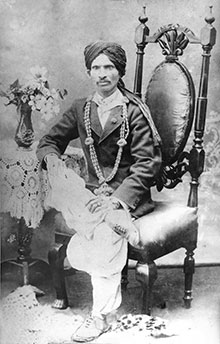 Those who have read some religious books and those who have listened to religious discourses must have often heard the words: Jivatma, Shivatma, and Paramatman. Jivatma is the individual soul who experiences pleasure and pain in this worldly life. Shivatma is the Paramatman who is the root cause of all the activities in the Universe. The absolute Being who pervades all things and is also beyond them is the Paramatman, otherwise known as Brahman. One and the same Being has been given these different names according to the different aspects in which He has been looked at.
Those who have read some religious books and those who have listened to religious discourses must have often heard the words: Jivatma, Shivatma, and Paramatman. Jivatma is the individual soul who experiences pleasure and pain in this worldly life. Shivatma is the Paramatman who is the root cause of all the activities in the Universe. The absolute Being who pervades all things and is also beyond them is the Paramatman, otherwise known as Brahman. One and the same Being has been given these different names according to the different aspects in which He has been looked at.
